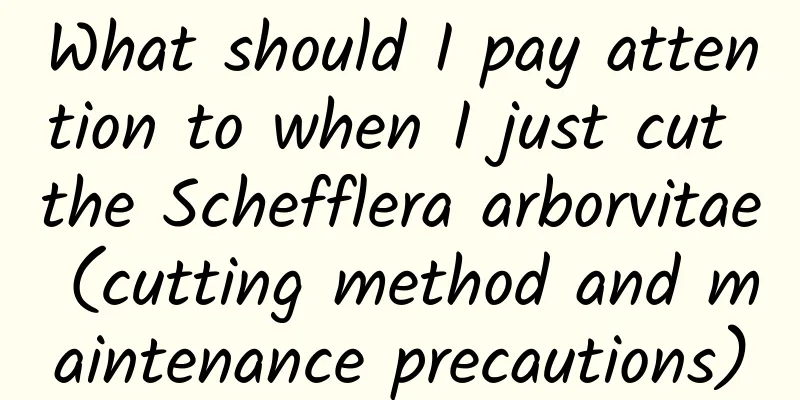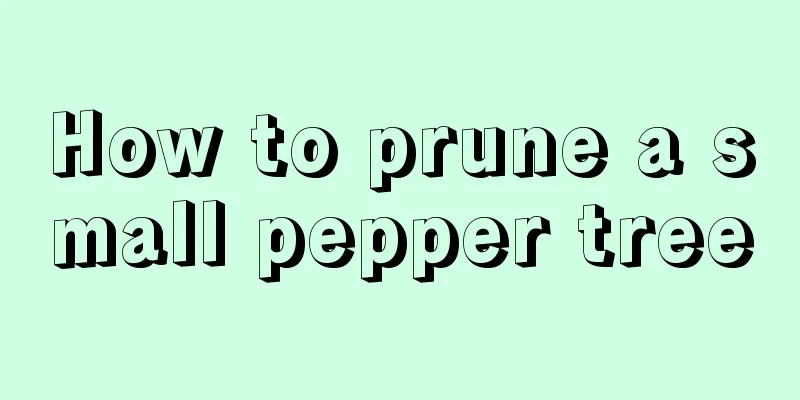What should I pay attention to when I just cut the Schefflera arborvitae (cutting method and maintenance precautions)

Why is it easy for black stems to appear in cuttings of Schefflera chinensisSchefflera arborvitae is relatively easy to propagate by cuttings, but many friends do not master the correct cutting method during the cutting process, which will lead to black stem rot in the cuttings in the later stage. The reason for the black stems of the cuttings is mostly due to improper handling of the cuttings and the medium. 1. Failure to sterilize and disinfect the cuttings and substrateMany people take cuttings of Schefflera arborvitae. After pruning the cuttings, they do not sterilize the cuttings and the substrate used. There are a large number of bacteria in the soil, which will infect the wounds of the cuttings , and finally cause the cuttings to be infected with bacteria and cause black stem rot. 2. The matrix is too sticky and has poor water permeabilityThe substrate used for cuttings is also related to whether the cuttings can take root and survive normally. If you use some too sticky soil for cuttings of Schefflera arborvitae, the water permeability and air permeability are very poor, and the base of the cuttings cannot breathe normally in it. It is easy to form water accumulation after each watering, which will cause the base of the cuttings to rot over time, leading to failure of cuttings. Therefore, when cutting flowers and trees, you must choose a medium with good water permeability and air permeability to facilitate the rooting of the cuttings. How to avoid black rot in cuttings of Schefflera chinensisIt is a common phenomenon that black rot occurs in the cuttings of Schefflera arborvitae after cuttings. As long as you pay attention to some details before cuttings, you can avoid the black rot phenomenon of the cuttings. 1. Avoid using media with too high viscosityAs mentioned above, media with too high viscosity have poor water permeability and air permeability, and are prone to water accumulation, which prevents the cuttings from breathing normally, causing black rot in the cuttings and making it difficult for them to take root. Therefore, when choosing a cutting medium, try to use one that is loose and breathable, such as vermiculite, perlite, river sand, etc. that are often used for cuttings. You can also mix several types together as a cutting medium. 2. The cuttings must be sterilizedAfter choosing healthy branches of Schefflera and pruning them, don't rush to use them for cuttings. If you have sterilizers at home, such as carbendazim, potassium permanganate, etc., it is best to sterilize and disinfect the cuttings first. You can mix carbendazim or potassium permanganate into an aqueous solution in a ratio of 1:1000, soak the cuttings in it for about ten minutes, take them out and dry them before grafting them. This can effectively prevent the cuttings from being infected by bacteria and causing black rot. 3. The matrix must also be sterilized and disinfectedAfter sterilizing the cuttings with carbendazim or potassium permanganate, you can use the remaining sterilization water to spray the substrate, stirring evenly while spraying, and fully sterilize the soil. If it is summer, you can also spread the substrate on the cement floor and achieve the purpose of sterilization and disinfection through strong sunlight exposure. |
<<: How to grow green plants fast and vigorously at home (how to grow good green plants indoors)
Recommend
Pomegranate potted planting methods and precautions
The habits of potted pomegranates and ordinary po...
What soil is best for white palm
The soil for planting anthuriums should not be to...
Time and method of changing soil for Catharanthus roseus
Changing soil time for Vinca rosea Generally spea...
Causes and treatments for yellowing geranium leaves
1. Temperature discomfort 1. Reason: Geranium pre...
How to identify cat milk
1. Tree features Cat's Milk is a shrub or sma...
How to prune roses to make them bloom more (pruning roses will make them more vigorous)
"Give someone a rose, and the fragrance will...
What are the cultivation methods and precautions of osmanthus
Osmanthus Introduction Sweet osmanthus is a plant...
Causes and treatments for yellow leaves of Rieger Begonia
1. Temperature discomfort 1. Reason: Begonia is n...
Why does tuberose bloom at night?
Flowers at night Although most plants bloom durin...
How to grow snow lotus
1. Breeding environment 1. Soil: Loose, humus-ric...
Vinca care in four seasons
Spring Care of Vinca Spring is the season when al...
How can a fortune tree grow taller?
1. If it is a cutting of the fortune tree In many...
The correct way to transplant orchids
Orchids are a beautiful and elegant family of flo...
Juicy forage growing conditions and characteristics
Juicy Forage Growing Conditions Juicy forage gras...
How to fertilize potted Cardinal Lamps? Pay attention to the operation details!
Fertilization method for potted lotus lantern Gro...









